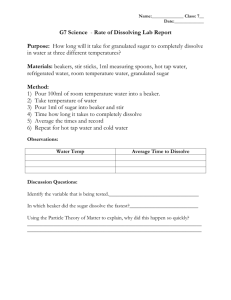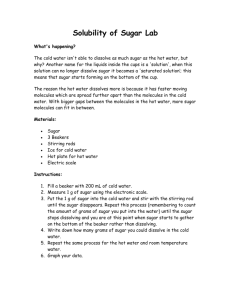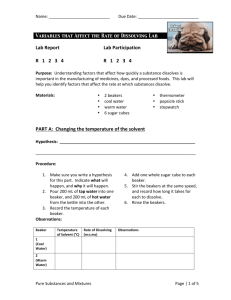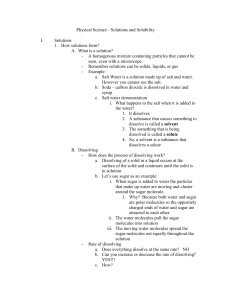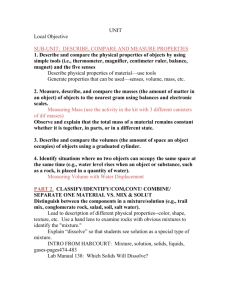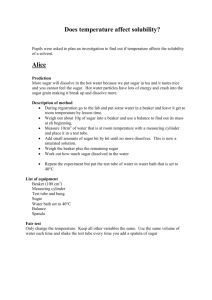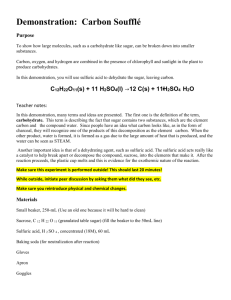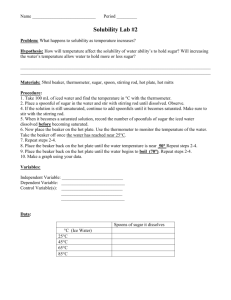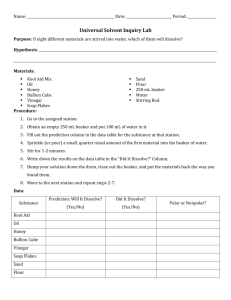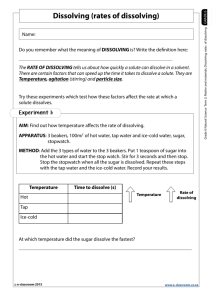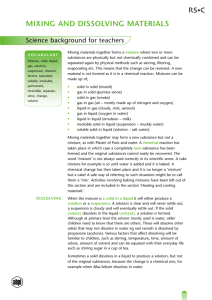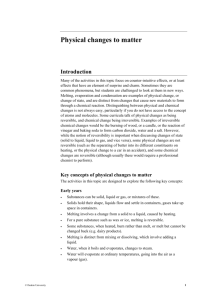STRAND: Pure Substances and Mixtures LESSON SUBJECT: The
advertisement
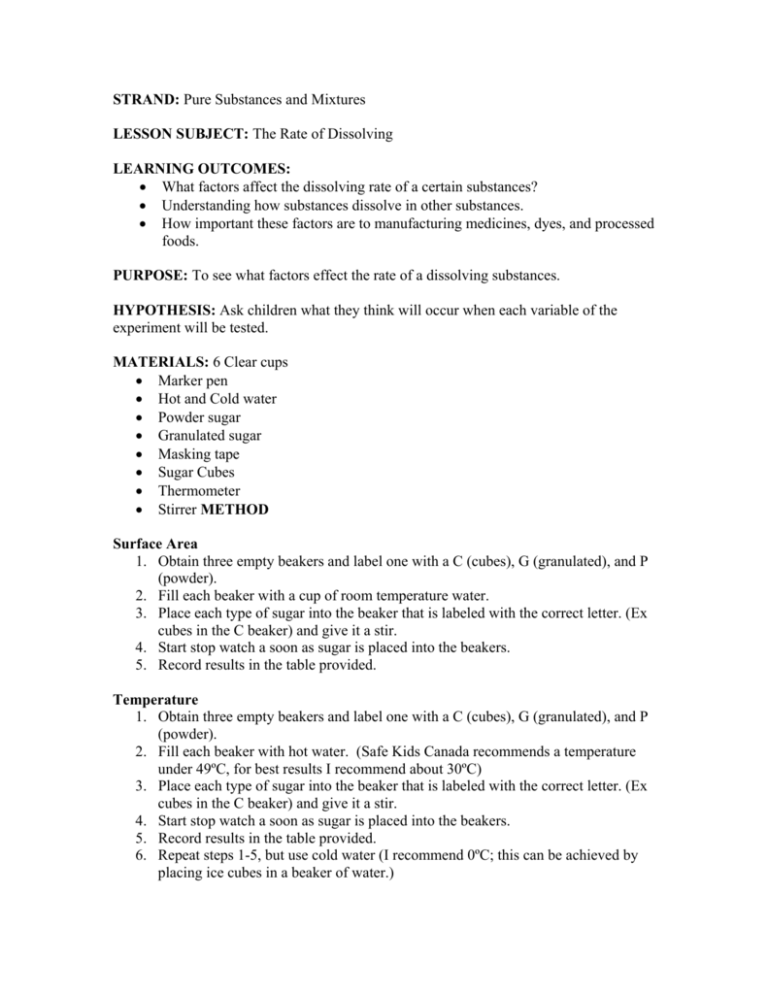
STRAND: Pure Substances and Mixtures LESSON SUBJECT: The Rate of Dissolving LEARNING OUTCOMES: • What factors affect the dissolving rate of a certain substances? • Understanding how substances dissolve in other substances. • How important these factors are to manufacturing medicines, dyes, and processed foods. PURPOSE: To see what factors effect the rate of a dissolving substances. HYPOTHESIS: Ask children what they think will occur when each variable of the experiment will be tested. MATERIALS: 6 Clear cups • Marker pen • Hot and Cold water • Powder sugar • Granulated sugar • Masking tape • Sugar Cubes • Thermometer • Stirrer METHOD Surface Area 1. Obtain three empty beakers and label one with a C (cubes), G (granulated), and P (powder). 2. Fill each beaker with a cup of room temperature water. 3. Place each type of sugar into the beaker that is labeled with the correct letter. (Ex cubes in the C beaker) and give it a stir. 4. Start stop watch a soon as sugar is placed into the beakers. 5. Record results in the table provided. Temperature 1. Obtain three empty beakers and label one with a C (cubes), G (granulated), and P (powder). 2. Fill each beaker with hot water. (Safe Kids Canada recommends a temperature under 49ºC, for best results I recommend about 30ºC) 3. Place each type of sugar into the beaker that is labeled with the correct letter. (Ex cubes in the C beaker) and give it a stir. 4. Start stop watch a soon as sugar is placed into the beakers. 5. Record results in the table provided. 6. Repeat steps 1-5, but use cold water (I recommend 0ºC; this can be achieved by placing ice cubes in a beaker of water.) BACKGROUND INFORMATION The rate at which substances dissolve is effect by many variables. In this experiment we take a look at how size and temperature affects the rate. The surface area of a substance can directly affect the rate at which it will dissolve. As stated in the Collision Theory, the more surface area substance has the easier or less time it will take to react. The additional surface area allows the molecules to move around in a larger space. This result in more collision between the molecules, which in turn speeds up the reaction or in this case speed up dissolving time. Out of the three sugars that are used in the experiment, the powder sugar has the most surface area. From this you can probably predict which sugar will dissolve the fastest. Since the sugar is in powder form, the surface area of the particles is larger. This factor allows the powder to react the quickest out the three sugars. The opposite can be assumed for the cube of sugar. Since it has the smallest surface area it will likely take the longest to dissolve. Temperature is also a factor that affects the rate at which a substance will dissolve. The Collision Theory also plays a roll in the effect on temperature and the rate of dissolving. When a substance is heated the molecules begin to move around faster, and collide at a quicker rate. This will reduce the time it takes to dissolve a substance drastically. When a substance is cooled down, the collisions of the molecules will begin to slow down. This will result in a longer reaction time, or a longer dissolving time. Once again the powdered sugar can only benefit from the temperature change.
